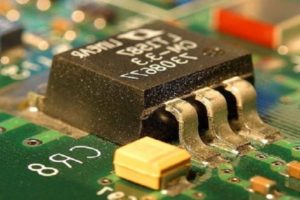
By Jean-Marc F. Blanchard
Over the past 12 months or so, there has been growing angst around the world, especially in the United States, about China’s designs in the semiconductor sector. These ambitions are not new and constitute an integral part of China’s efforts since the 1950s to gain national technological independence, enhance its military capabilities and control over information, and move up the industrial value-added chain.
What seems to have triggered the new level of anxiety is the fact that Chinese firms, many state-owned or with close state ties, now are pursuing billions of dollars of deals in the sector, as witnessed by Chinese attempts — some successful, some not — over approximately the past year to acquire Fairchild Semiconductor and Lattice Semiconductor in the U.S. as well as Aixtron in Germany. Moreover, the Chinese government reportedly has built a $100-$150 billion war chest to fund additional acquisitions in the sector.
In response to Chinese moves, former President Barack Obama, at the end of his second term in office, belatedly launched a review of U.S. “semiconductor innovation, competitiveness, and security” that, not surprisingly, paid extensive attention to China. The final report, prepared under the auspices of Obama’s Council of Advisors on Science and Technology and into which American semiconductor industry representatives had substantial input, called for a number of policies to ensure American leadership in this critical sector.
Among other things, it advocated working with allies to strengthen global export controls; bolstering support for the domestic industry through tax measures, funding for research, and talent development; shedding greater light on Chinese practices and reviewing Chinese investments in the sector in the context of broader Chinese objectives such as national security goals; and responding directly to Chinese policies that violate trade rules and distort the global market. Of course, such recommendations were paired with calls for reciprocity; that is, demands that China open its chip sector to American investors in return for being granted the opportunity to buy to U.S. chip firms and chip technologies.
On the surface, these policy recommendations seem quite reasonable. After all, it is incontestable that the semiconductor sector writ large is a vital one for national defense and the industrial sector, as chips are used in missiles, bombers and fighters, and a slew of other military equipment as well as computers, telecommunication equipment, and the Internet of Things.
Beyond this, there is no doubt that China has not done an adequate job protecting the intellectual property (IP) of foreign chip firms and has been parochial in the way that it has treated foreign semiconductor firms that want to enter the China market or that already operate on the Chinese mainland.
Regarding the latter, Chinese pressure, implicit and explicit, has driven firms like AMD, Intel, and Qualcomm to construct billion dollar chip plants in China, build advanced R&D facilities there, and partner with Chinese firms and research institutions. It remains open to question, though, if a strategy crudely limiting Chinese investment in home country semiconductor firms, hindering Chinese access to chip technologies, or blocking foreign firm cooperation with Chinese ones is an ideal one.
For more information visit: http://thediplomat.com/2017/02/rational-thinking-about-chinas-semiconductor-push/

















